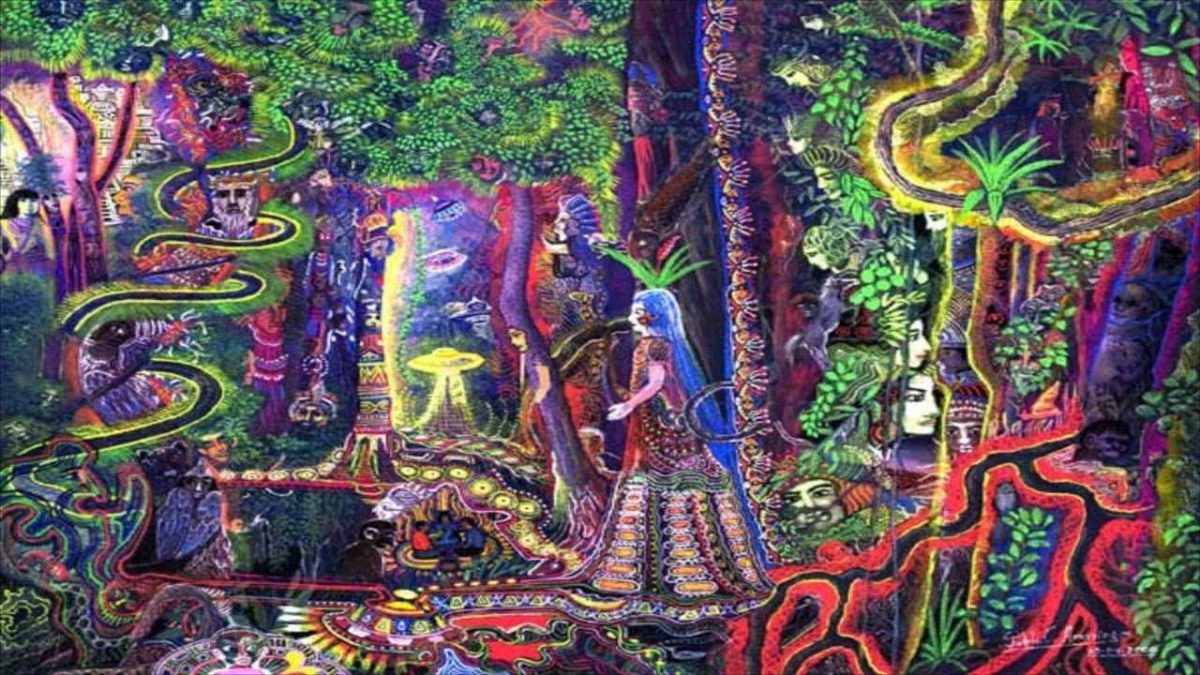Like spiraling serpents entwined in symbiosis; sequential strands of DNA continue to bring to light new breakthroughs in technology with their capacity for storing large quantities of data, even ancestral memories passed down from generation to generation.
To the shamans of Peru, DNA is something that can be accessed and communicated with through altered states of consciousness. To the researchers at the University of Washington, in its synthetic form DNA is a means in which they can encode and successfully retrieve large quantities of information in a microscopic space. And for Microsoft, synthetic DNA could represent digital storage perfection.
Multiple, diverse approaches are anticipated, which may utilize DNA, polypeptides, synthetic polymers, or other sequence-controlled polymer media.

Dr. David Markowitz
Recently, the Intelligence Advanced Research Projects Activity (IARPA) from the Office of the Director of National Intelligence launched an open solicitation for research proposals dedicated to its Molecular Information Storage (MIST) program led by Program Manager Dr. David Markowitz.
The goal of the MIST program is “to develop deployable storage technologies that can eventually scale into the exabyte regime and beyond with reduced physical footprint, power and cost requirements relative to conventional storage technologies.”
IARPA held a Proposers’ Day conference for the MIST program and others, on February 21, 2018 in anticipation of the solicitation. Video below.
MIST looks to accomplish its exabyte data storage regime goal “by using sequence-controlled polymers as a data storage medium, and by building the necessary devices and information systems to interface with this medium.”
To give a clearer understanding of how big an Exabyte is a Kilobyte is 1,000 Bytes. A Megabyte is 1,000 Kilobytes. A Gigabyte is 1,000 Megabytes. A Terabyte is 1,000 Gigabytes. A Petabyte is 1,000 Terabytes, and an Exabyte is 1,000 Petabytes.
That is an astounding amount of data that the intelligence agency is looking to harness, and it isn’t even the largest unit of measurement on the multiples of bytes scale.
When IARPA refers to data storage mediums for its exabyte regime, it means that “multiple, diverse approaches are anticipated, which may utilize DNA, polypeptides, synthetic polymers, or other sequence-controlled polymer media.”
Both shamans and molecular biologists agree that there is a hidden unity under the surface of life’s diversity; both associate this unity with the double helix shape
According to a 2016 article in the journal Nature, “With DNA, a whole human genome fits into a cell that is invisible to the naked eye. For sheer density of information storage, DNA could be orders of magnitude beyond silicon — perfect for long-term archiving.”
The storing power of DNA is so great that “if information could be packaged as densely as it is in the genes of the bacterium Escherichia coli, the world’s storage needs could be met by about a kilogram of DNA.”
DNA Contains Ancestral Memories Passed Down Through Generations

Painting by Peruvian shaman Pablo Amaringo
If we can store enormous chunks of data into a small section of DNA, what are the chances that we are not the first to discover this? Is it really feasible that 3.2 billion letters of code, roughly 97% of our DNA, is to be considered junk? Whether by intelligent design, mutation, or just plain chance alone, most of our understanding of human origins and DNA are shrouded in mystery and controversy.
“Both shamans and molecular biologists agree that there is a hidden unity under the surface of life’s diversity; both associate this unity with the double helix shape (or two entwined serpents, a twisted ladder, a spiral staircase, two vines wrapped around each other); both consider that one must deal with this level of reality in order to heal. One can fill a book with correspondences between shamanism and molecular biology,” wrote Jeremy Narby, anthropologist and author of “The Cosmic Serpent, DNA and the Origins of Knowledge.”
Read More: UW research into DNA storage backs up ancient shamanic knowledge
The study “provided ‘compelling evidence’ for the biological transmission of memory”
This corroborates what researchers out of Emory University School of Medicine in Atlanta were saying almost five years ago — that part of the “hidden unity under the surface of life’s diversity,” DNA, is that memories can be passed down from our ancestors without us ever experiencing them directly in our lifetimes.
In an article in The Telegraph, Professor Marcus Pembrey said that the study “provided ‘compelling evidence’ for the biological transmission of memory, and that it addresses “the controversial subject of transmission of the ‘memory’ of ancestral experience down the generations.”
Immanuel Velikovsky, a contemporary colleague of Albert Einstein, wrote “Worlds in Collision” in 1950 in which he concluded that all of humanity shares a collective memory of multiple world devastations that traumatized the collective psyche of all the survivors. These are the “archetypes” of Carl Jung’s collective unconscious – memories and symbols that are universal to all humans, but are not readily explicable by any rational means.
Read More: Can an AI collective subconscious exist?
According to Jung “the human mind has innate characteristics ‘imprinted’ on it as a result of evolution. These universal predispositions stem from our ancestral past. Fear of the dark, or of snakes and spiders might be examples and it is interesting that this idea has recently been revived in the theory of prepared conditioning.”
Read More: How social media affects our collective unconscious
Ever since the Human Genome Project began in 2000, scientists have been scampering to understand the way our genome works and how to account for so-called junk DNA. Researchers of the international Encode Project found that laying within this hidden code they have identified“more than 10,000 new ‘genes’ that code for components that control how the more familiar protein-coding genes work.”
As more and more research begins to chip away at the idea of junk DNA, more and more questions arise. Where did this DNA come from? What is its purpose? How can we access it?
It looks like we are starting to discover the latter; perhaps one day we’ll discover its purpose.












